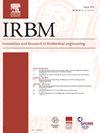由主动脉下膜引起的流体动力学改变:一项体外研究
IF 5.6
4区 医学
Q1 ENGINEERING, BIOMEDICAL
引用次数: 0
摘要
背景:主动脉下狭窄是一种主动脉疾病,其特征是主动脉瓣入口处存在一层膜,导致流入腔突然减少。膜发展为可变厚度的组织生长,可引起压力梯度的主要增加。在这种情况下,一旦确诊,就通过手术切除。方法为研究主动脉下膜对血流动力学的影响,设计并进行了体外实验。在生物假体控制阀的入口植入刚性和柔性膜。这些模拟膜具有不同的径向和角度排列,模拟同心和偏心孔位置。对于每种配置,研究了一系列不同的膜延伸,逐步减少控制阀入口的孔口面积。结果水动力性能分析表明,当膜孔面积减小到通畅流腔的75%以下时,主动脉下膜的危害作用显著。瓣叶动态的视频分析表明,随着收缩压梯度的恶化,主动脉下膜的存在增加了心尖颤动。随着膜孔面积的减小,小叶的振荡频率也在减小。结论膜的纤维肌肉或薄的性质对病理的严重程度有重要作用,高刚度通常产生较差的流体力学。孔的尺寸和位置对收缩性能也很重要,可以确定潜在的结构退化和血液损伤。本文章由计算机程序翻译,如有差异,请以英文原文为准。

Hydrodynamic Alterations Produced by Subaortic Membranes: An in Vitro Study
Background
Subaortic stenosis is an aortic disease characterised by the presence of a membrane located at the aortic valve inlet, that causes a sudden reduction of the inflow lumen. The membrane develops as a tissue growth of variable thickness that can cause a major increase in the pressure gradient. In this case, when diagnosed, it is removed by surgical resection.
Methods
To investigate the haemodynamic alteration introduced by subaortic membranes, an in vitro study was designed and performed. Stiff and flexible membranes were implanted at the inlet of a bioprosthetic control valve. These mock membranes had different radial and angular alignment, modelling concentric and eccentric orifice positions. For each configuration, a range of different membrane extensions was studied, progressively reducing the orifice area at the inlet of the control valve.
Results
Analysis of the hydrodynamic performances indicates that the detrimental effect of subaortic membranes becomes significant when the membrane orifice areas reduce below 75% of the unobstructed inflow lumen. Video analysis of the valve leaflets dynamics indicates that, together with a worsening in the systolic pressure gradient, the presence of subaortic membranes increases cusps fluttering. As the membrane orifice area reduces, leaflets experience faster oscillation frequencies at decreasing amplitudes.
Conclusions
The fibromuscular or thin nature of the membrane has a significant role on the severity of the pathology, with higher stiffnesses generally producing worse hydrodynamics. The orifice dimension and position are also important on the systolic performance and can determine potential structural degradation and haematic damage.
求助全文
通过发布文献求助,成功后即可免费获取论文全文。
去求助
来源期刊

Irbm
ENGINEERING, BIOMEDICAL-
CiteScore
10.30
自引率
4.20%
发文量
81
审稿时长
57 days
期刊介绍:
IRBM is the journal of the AGBM (Alliance for engineering in Biology an Medicine / Alliance pour le génie biologique et médical) and the SFGBM (BioMedical Engineering French Society / Société française de génie biologique médical) and the AFIB (French Association of Biomedical Engineers / Association française des ingénieurs biomédicaux).
As a vehicle of information and knowledge in the field of biomedical technologies, IRBM is devoted to fundamental as well as clinical research. Biomedical engineering and use of new technologies are the cornerstones of IRBM, providing authors and users with the latest information. Its six issues per year propose reviews (state-of-the-art and current knowledge), original articles directed at fundamental research and articles focusing on biomedical engineering. All articles are submitted to peer reviewers acting as guarantors for IRBM''s scientific and medical content. The field covered by IRBM includes all the discipline of Biomedical engineering. Thereby, the type of papers published include those that cover the technological and methodological development in:
-Physiological and Biological Signal processing (EEG, MEG, ECG…)-
Medical Image processing-
Biomechanics-
Biomaterials-
Medical Physics-
Biophysics-
Physiological and Biological Sensors-
Information technologies in healthcare-
Disability research-
Computational physiology-
…
 求助内容:
求助内容: 应助结果提醒方式:
应助结果提醒方式:


